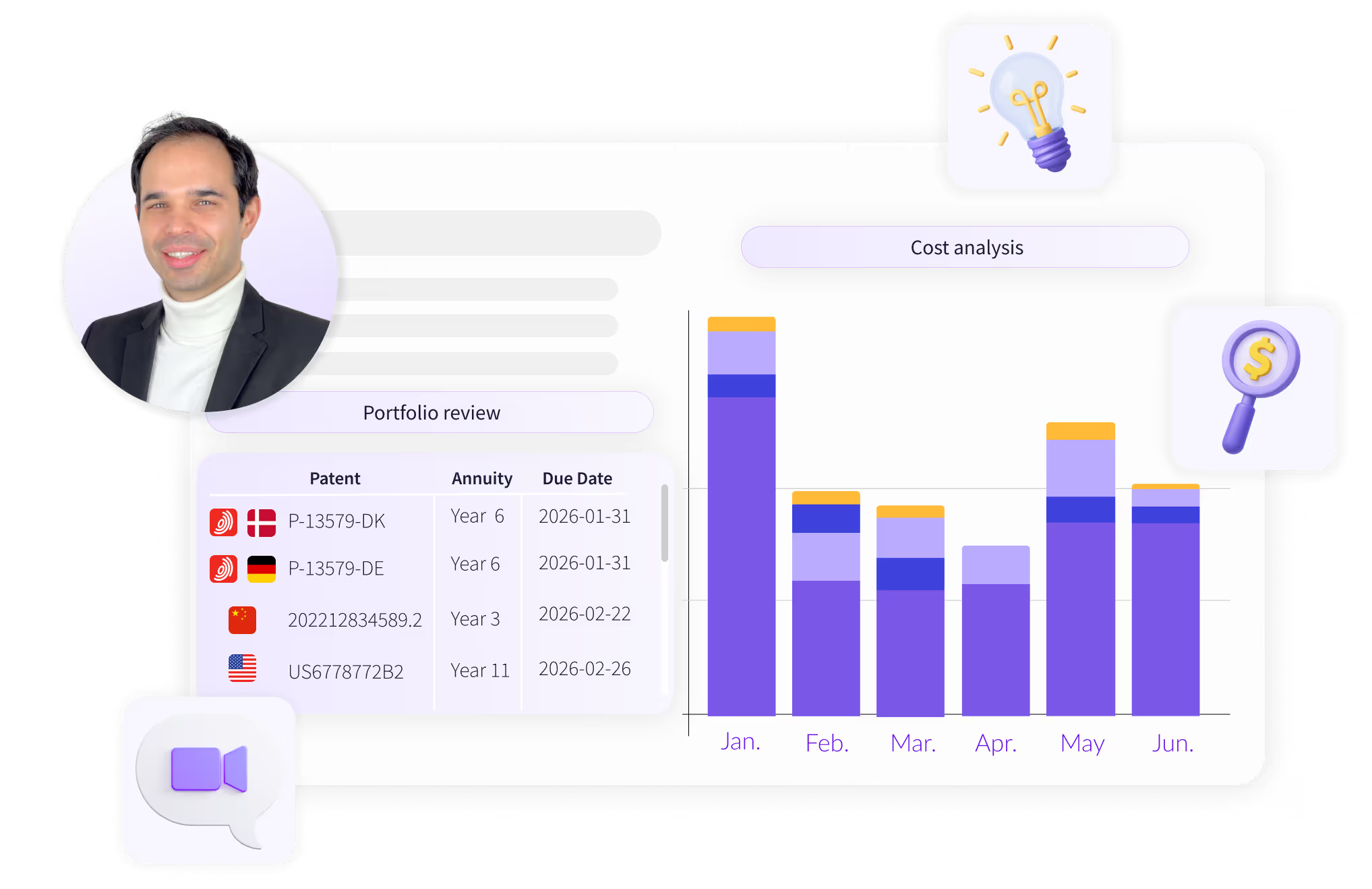TRY OUR NEW (FREE) IP RENEWAL COST CALCULATOR
Calculate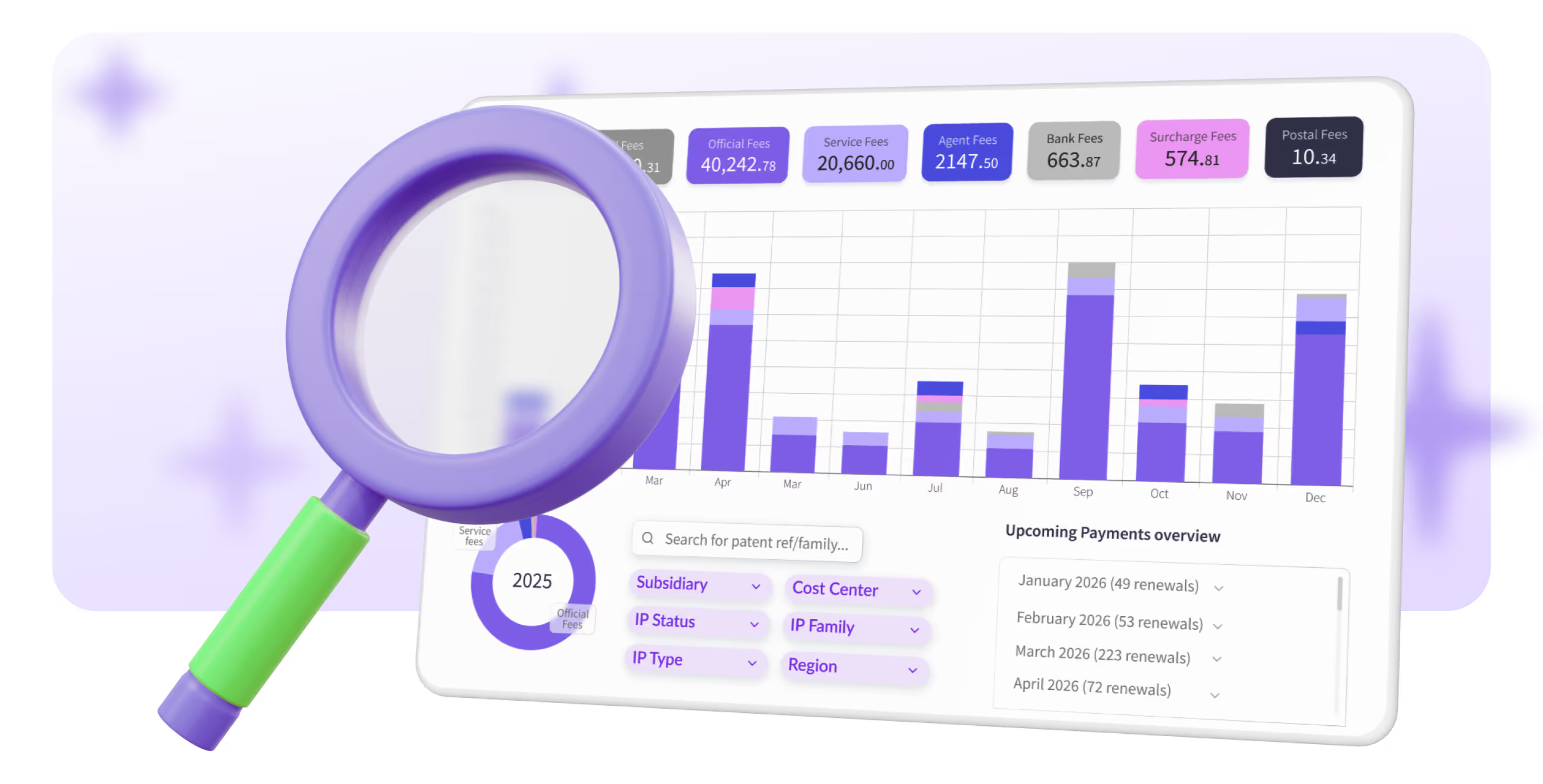
.avif)
Managing patent maintenance efficiently is not just a legal necessity but a strategic advantage. More patents mean more jurisdictions, more deadlines to keep, and more room for error if your system isn’t built to scale.
This guide is designed for in-house IP teams, SMEs, and scaling startups that want to future-proof their patent maintenance processes. Whether you’ve just crossed your tenth granted patent or are managing a substantial portfolio, we’ll walk you through how to build a smart, scalable patent maintenance workflow that saves time, reduces risk & costs, and grows with your team.
Before diving in, here’s a quick overview of what you’ll take away from this article:
Patent maintenance is the process of keeping your granted patents in force by paying scheduled fees, commonly known as patent annuity fees. Patent offices require these payments to ensure continued legal protection for your intellectual property.
The exact amount and timing of patent maintenance payments vary by jurisdiction and by how long the patent has been in force. Early years tend to be less expensive, while fees often increase in later years. In some jurisdictions, like the United States, payments are due less frequently, typically every 4 years.
As your team scales and your portfolio expands, a structured, centralized, and proactive approach to patent maintenance becomes essential to reduce risk, manage costs, and retain full control over your IP assets.
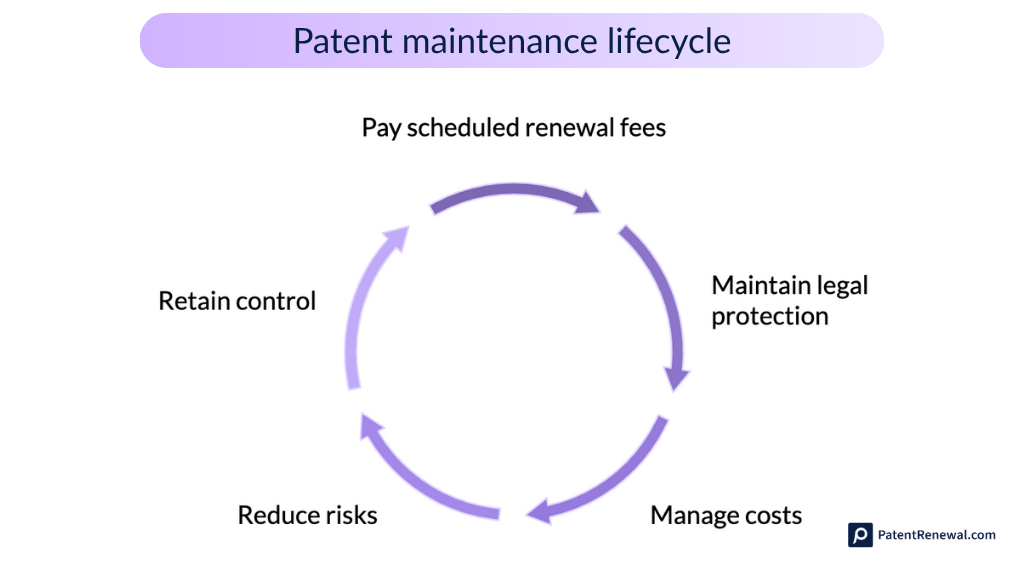
Here’s what a scalable patent maintenance workflow looks like from end-to-end:
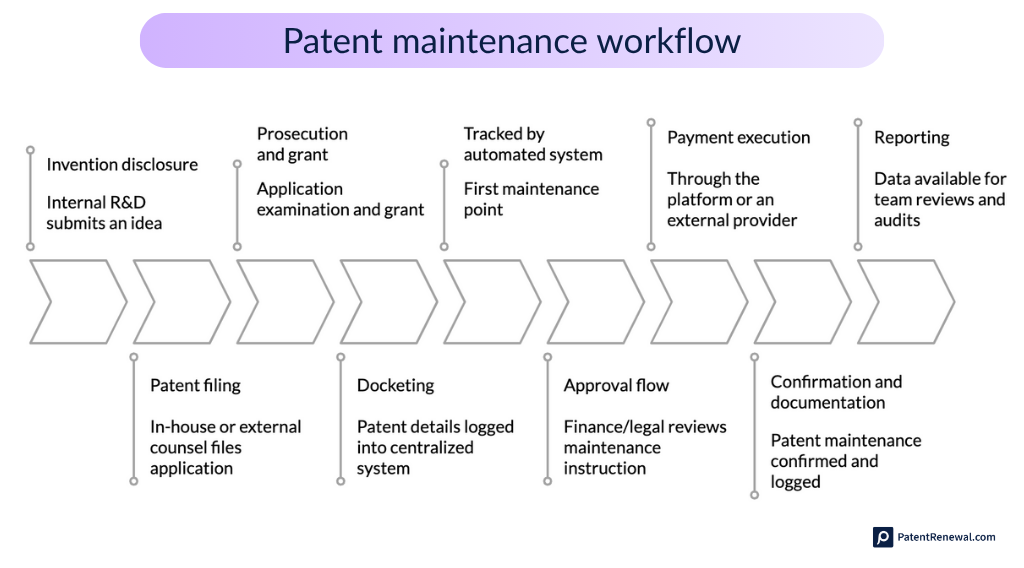
This structured flow eliminates the ad-hoc decision-making that causes costly mistakes later on.
Having a clear workflow is only part of the equation. The real challenge lies in executing that process consistently across jurisdictions, teams, and time zones. That’s where the right patent maintenance platform, or provider, makes all the difference.
At the beginning, when companies have a small, manageable patent portfolio it’s natural to do patent maintenance manually, which is still easy to track in a spreadsheet. But as the business grows and the portfolio expands, this simple approach quickly becomes inefficient and prone to costly errors.
Here are some of the most common challenges of manual patent maintenance:
If your team wants to maintain patents efficiently at scale, the workflow must be structured around five key components. Let’s break them down.
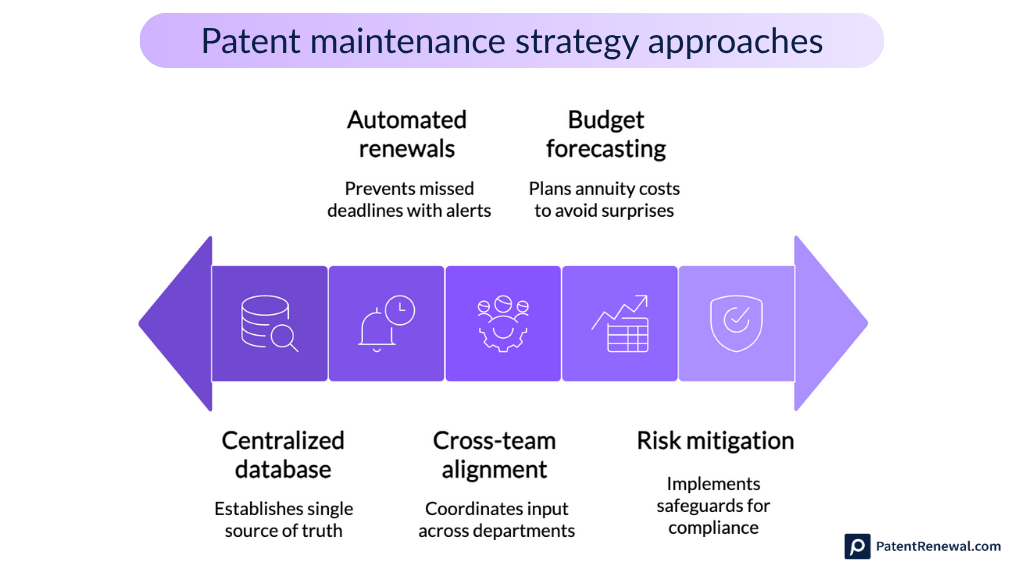
Your patent portfolio needs a single source of truth. This is the foundation of a scalable system where everyone from legal to finance can access the same up-to-date records.
One of the biggest risks in patent maintenance is a missed deadline. Eliminate manual tracking and calendar reminders, and use automated alerts.
Automation ensures no patent slips through the cracks even when responsibilities shift across teams.
Patent maintenance is not a legal-only responsibility. It requires input and coordination across different teams and departments:
Assign roles clearly, use notification systems, and consider setting up regular check-ins to align.
As your portfolio grows, so do your patent annuity fees. Budgeting becomes a challenge without the right tools.
Smart forecasting ensures that finance can plan and legal can act without delays.
To avoid patent maintenance disasters, your system should include both automated and manual safeguards:
Partnering with the right IP maintenance or IP management software provider can reduce risks while maintaining your internal visibility and control.
Now it’s time to measure how well your patent maintenance system performs. Tracking the right metrics ensures you’re not just maintaining patents, you’re doing it efficiently, cost-effectively, and at scale.
These metrics help you understand the effectiveness of your patent maintenance system:
These numbers will help you justify system upgrades, provider changes, or new investments.

Whether you’re managing maintenance in-house or through an external attorney/provider, your tools must be built to support your process, not restrict it. Let’s look at what to prioritize, when choosing a system that scales with your business.
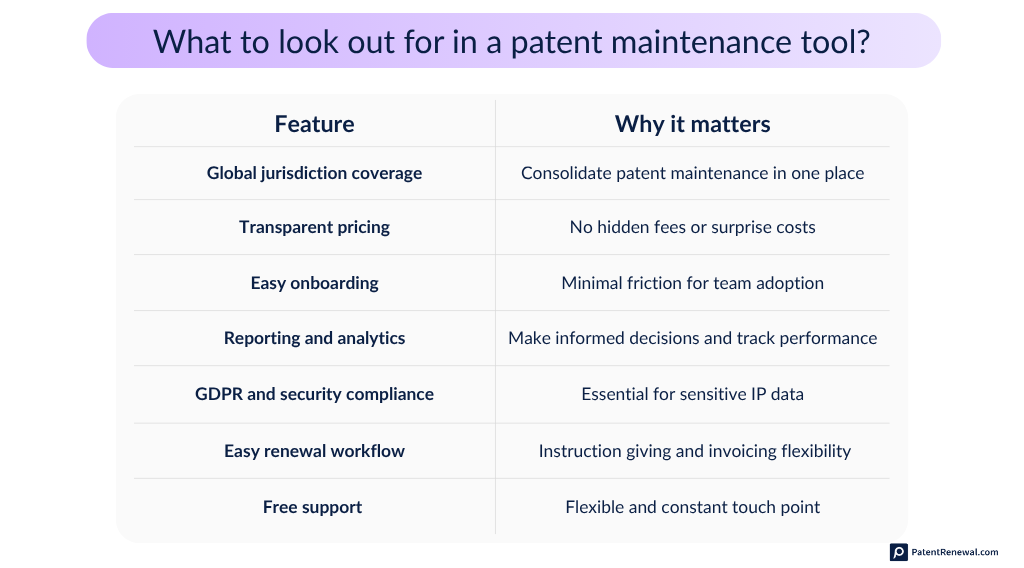
Red flags to watch out for:
Experienced IP managers often share the same realization: automation and flexibility go hand-in-hand. Over time, the IP teams have to refine their processes, automate consciously, and document best practices that prevent errors before they happen.
Here are some proven best practices from scaling teams:
But even the most streamlined workflow isn’t complete without strong compliance and data security measures.
Patent data is sensitive, and as your portfolio spans more markets, ensuring legal and technical compliance becomes a foundational requirement. Your patent maintenance workflow must meet high compliance standards, especially when working across borders.
Ensure your system or partner complies with:
As your patent portfolio expands, your workflow needs to evolve with it. From managing more team members to ensuring consistency across hundreds of patents, your processes must scale without becoming chaotic.
Here’s how your workflow needs to adapt:
Patent maintenance is more than just an operational task, it’s a strategic pillar for protecting innovation at scale. A scalable workflow helps your growing team stay compliant, reduce costs, and maintain control across jurisdictions.
If your current system is slowing you down, it may be time to reconsider your tools and processes. Thousands of patent holders around the world trust PatentRenewal.com to manage their patent maintenance efficiently and affordably with transparency and control at every step.
Want to explore a better way to manage your renewals? See how growing teams are streamlining patent maintenance with PatentRenewal.com's automated solution.
Interested in a free IP renewal consultation? Benchmark your current IP renewal setup and costs against market standards.
